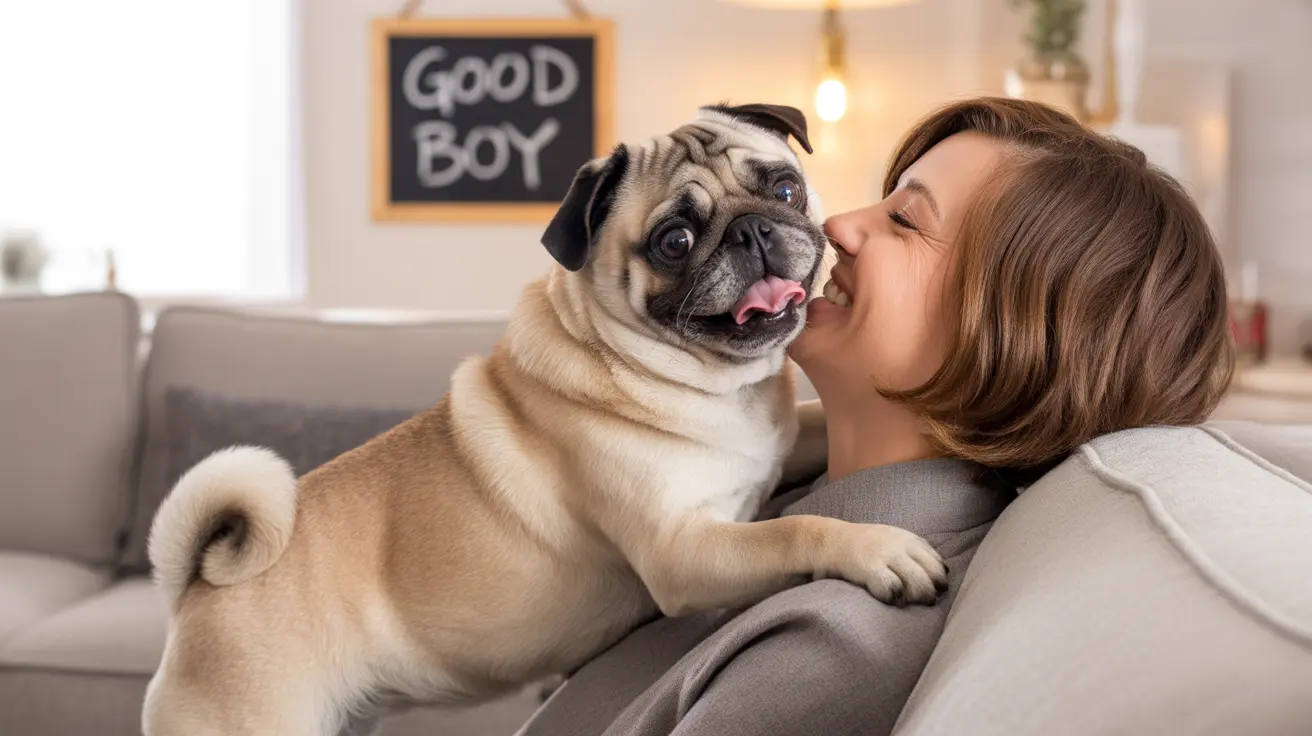If you're a pug parent, you've likely noticed your furry friend's enthusiastic licking habits. From showering you with affectionate kisses to obsessively grooming themselves, pugs are known for their frequent licking behavior. While some licking is perfectly normal, understanding why pugs lick so much and recognizing when it becomes excessive is crucial for their health and well-being.
In this comprehensive guide, we'll explore the various reasons behind your pug's licking habits, help you identify potential problems, and provide practical solutions to manage excessive licking.
Natural Reasons for Pug Licking Behavior
Pugs, like all dogs, use licking as a natural form of communication and expression. Here are some common reasons why your pug might engage in normal licking behavior:
Showing Affection
Pugs are notably affectionate dogs, and licking is one of their primary ways to show love and strengthen bonds with their human family members. This behavior releases feel-good hormones like oxytocin and endorphins, making it naturally rewarding for your pug.
Grooming and Self-Care
Regular self-grooming through licking is a natural canine behavior. Pugs may spend time licking their paws, legs, and other accessible areas as part of their daily cleaning routine.
Medical Causes of Excessive Licking
Allergies and Skin Conditions
Pugs are prone to various allergies and skin sensitivities that can trigger excessive licking. Food allergies, environmental allergens, and contact dermatitis can all cause irritation that prompts increased licking behavior.
Pain and Discomfort
Sometimes, excessive licking can indicate underlying pain or physical discomfort. Joint issues, injuries, or internal problems might cause your pug to lick specific areas repeatedly as a coping mechanism.
Behavioral Triggers for Excessive Licking
Anxiety and Stress
Pugs may resort to excessive licking when feeling anxious or stressed. This can become a self-soothing behavior, similar to how humans might bite their nails when nervous.
Attention-Seeking Behavior
Smart and social pugs quickly learn that licking often gets their owner's attention. If this behavior is consistently rewarded with attention, it can become a learned response.
Managing Your Pug's Licking Behavior
Prevention and Treatment
Address excessive licking by identifying and treating the underlying cause. Regular vet check-ups, proper grooming, and maintaining a clean environment can help prevent many triggers for excessive licking.
Environmental Enrichment
Provide plenty of mental and physical stimulation to prevent boredom-induced licking. Interactive toys, regular exercise, and consistent attention can help reduce problematic licking behaviors.
Frequently Asked Questions
Why do pugs lick so much and when is it considered excessive?
Pugs lick as a form of communication, affection, and self-grooming. It becomes excessive when the behavior interferes with normal activities, causes skin damage, or occurs constantly throughout the day.
What medical issues can cause my pug to lick itself constantly?
Common medical causes include allergies, skin infections, parasites, joint pain, and gastrointestinal issues. Any sudden increase in licking behavior should be evaluated by a veterinarian.
How can I tell if my pug's licking is due to anxiety or behavioral reasons?
Anxiety-related licking often occurs during stressful situations, changes in routine, or when left alone. It may be accompanied by other signs of stress like pacing, whining, or destructive behavior.
What should I do if my pug is licking and chewing its paws excessively?
First, examine the paws for visible injuries, foreign objects, or signs of infection. Schedule a veterinary visit to rule out allergies or other medical conditions, and keep the paws clean and dry.
How can I manage and prevent excessive licking in my pug?
Implement a combination of medical care, behavioral training, and environmental management. This includes regular vet check-ups, providing appropriate toys and activities, maintaining a consistent routine, and addressing any underlying anxiety or stress factors.
Conclusion
While licking is a natural behavior for pugs, excessive licking requires attention and proper management. By understanding the various causes and implementing appropriate solutions, you can help ensure your pug maintains healthy licking habits and overall well-being.






